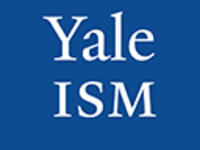
Liturgy, Poetry, and Visual Images in 18th Century Northumbria: The Bewcastle and Ruthwell Crosses
Part of the 2006-2007 Liturgy Symposium Series
ISM Great Hall - 409 Prospect Street, New Haven, CT
Refreshments for mind, body, and spirit will be served. Free and open to the public.
Éamonn Ó Carragáin was born in Clonmel, Co. Tipperary in 1942. He received his B.A. from St Patrick’s College, Maynooth (1962),his M.A. from University College, Dublin (1965) and his Ph.D. from the Queen’s University of Belfast (1975). He has lectured at Trinity College, Dublin (1964-66), the Queen’s University of Belfast (1966-72) and University College, Cork (1972 to date).
He has been Professor of Old and Middle English, and joint Head of Department, at Cork since 1975. He has published on Old English literature, Insular art and sculpture, the early liturgy, and the city of Rome and its symbolic landscapes. He has been elected to the Royal Irish Academy, the Society of Antiquaries of London and (as scientific correspondent) to the Istituto Nazionale Italiano di Studi Romani. His most recent publications include Ritual and the Rood: Liturgical Images and the Old English Poems of the “Dream of the Rood” Tradition.
Early medieval monks spent three or four hours each day chanting the liturgy. The present paper proposes that the liturgy provides the most sensible context within which to understand two of the most important examples of early Anglo-Saxon sculpture: the Bewcastle and Ruthwell Crosses (dated to ca 720-740). The Bewcastle Cross-shaft (the cross-head was lost in the early seventeenth century) links a sundial to the figures of Christ and his cousin John the Baptist. Their conceptions and births were celebrated near the solstices and equinoxes, and together formed a Christian solar cycle. The Ruthwell Cross greatly expands the imagery of the earlier Bewcastle monument. It has more inscriptions than all the other Insular high crosses put together. The inscriptions, in two languages (Latin and English) and two scripts (Roman and runic) include a highly original narrative, in English verse, of Christ’s death (a carefully edited epigraphic version of The Dream of the Rood). All this indicates that the cross had a highly literate commissioner, designer and (perhaps) audience. The most likely commissioners were friends and correspondents of Bede: Acca, bishop of Hexham (d. 740) and Pehthelm, bishop of Whithorn (d. 735). Acca, in particular, was a liturgical expert. The extensive iconographic sequence on the Ruthwell Cross relates Christian Initiation to the growth of Christ in Mary’s womb. It culminates in a uniquely extensive sequence of eucharistic images. That sequence is a profound meditation on the human and symbolic ways in which Christ is to be recognized. It incorporates a number of references to chants sung in the Roman liturgy on Good Friday at the ninth hour. The Ruthwell Cross gives us “the first piece of systematic theology in Britain,” as Sr Benedicta Ward has put it. It provides us with the clearest evidence, from early medieval Insular sources, of how liturgical practice could inspire poetic and artistic innovation.